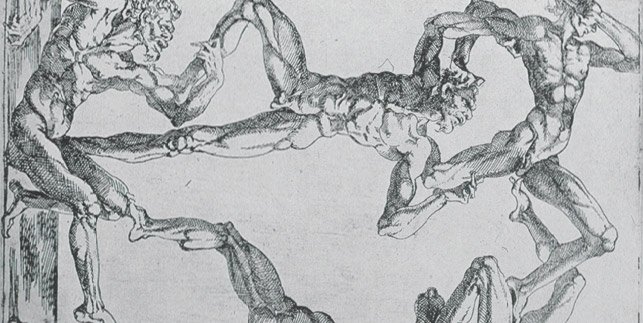Zentralinstitut der Humboldt-Universität zu Berlin

Research topic
The project aims to explore this dimension of Gestaltung, which in it’s obvious and material consequences will not easily be deconstructed, in exemplary scenarios at three different historical moments: in both the 16th century and the German Kaiserreich and even currently, what gender is or might be is subject to politically and scientifically vehement debate. The project will analyze the Gestaltung of gender in the three areas of fashion, habitus, and medical knowledge in the three aforementioned historical periods.
In the 1990s, Judith Butler’s thesis of gender performance strongly disrupted the already fragile identity categories, which were the basis of equality feminism as well as of difference feminism (Butler 1990, 1993). This radical conception of gender identity as a cultural construct made it possible to expose the hetero-normative »disciplinary system« as a fiction, which had tried to established itself by referring to a biological substrate as the undeceiving anchoring of the difference (Honegger 1991).
The conception of gender identity as performance was theoretically and politically attractive, since it made it possible to unmask and expose the fiction of the natural two sexes by conceiving performing gender and, above all in parodistic queer masquerades, to gain scope for displacements, reinterpretations, and multiplication of gender. The displacements in particular illuminate the fundamentally designed character of gender, including its hegemonic specifications.
Objectives
The project aims to explore this dimension of Gestaltung, which in it’s obvious and material consequences will not easily be deconstructed, in exemplary scenarios at three different historical moments: in both the 16th century and the German Kaiserreich and even currently, what gender is or might be is subject to politically and scientifically vehement debate.
In the 16th century, the scientific and ideological conditions included Andrea Vesalius’ renewal of anatomy and the »Querelles des femmes,« whereas around 1900 the women’s rights movement emerged, which also unsettled the traditional idea of masculinity. At present, the Gestaltung possibility of genetics and reproductive medicine raise pressing questions about the conceptualization of gender. Criticizing normative gender ascription seems to be part of a neoliberal, everyday-life pleading everywhere for flexibility and plurality and also for individual freedom for the Gestaltung of gender identity.
Against this backdrop, the project will analyze the Gestaltung of gender in the three areas of fashion, habitus, and medical knowledge in the three aforementioned historical periods. For all three times, images will play a crucial role for the mediation and inquiry of design options.
Execution
The 16th century example will be the French court of Henry III. Due to his excessive use of clothes and jewelry, his effeminate habits and – according to his opponents – his erotically motivated politics of male favorites, Henry III was the target of multiple polemics: their fascinated disgust at the same time reveals the norms the king defied in his mannerist will for Gestaltung. These not yet systematically studied text and image sources will be examined within their contemporary gender context. Here we will also cooperate with the project Transdisciplinary Indexing of Cultural-Historical Collections on questions about costume history.
The emergence of true hermaphrodites around 1900 confronted the medical question about »true sex« with the dilemma that there was no longer any anatomical substrate for the definition of sex: this was the basis for Freudian psychoanalysis, Schreber’s delirious sexual metamorphosis, and the psychic hermaphrodite idea of homosexuality. Thus, already around 1900 a field of cultural practices was made possible, which has meanwhile had to invent gender/sex by hormones, surgery, and cultural and juridical performances.
Thus, the recent theories of gender performance do not seem to be really new, and the project will analyze the different scopes resulting from present-day medicine and how the idea of performance was medically implemented.
Securing the results
The results will be published. Additionally, in cooperation with the research-training group Gender as a Category of Knowledge, a permanent forum »Gender – Knowledge – Gestaltung« will be established. There, mostly gender-specific questions emerging from the projects’ research will be discussed in terms of Gestaltung. It is also planned to organize a conference on »Gender – Knowledge – Gestaltung.«
